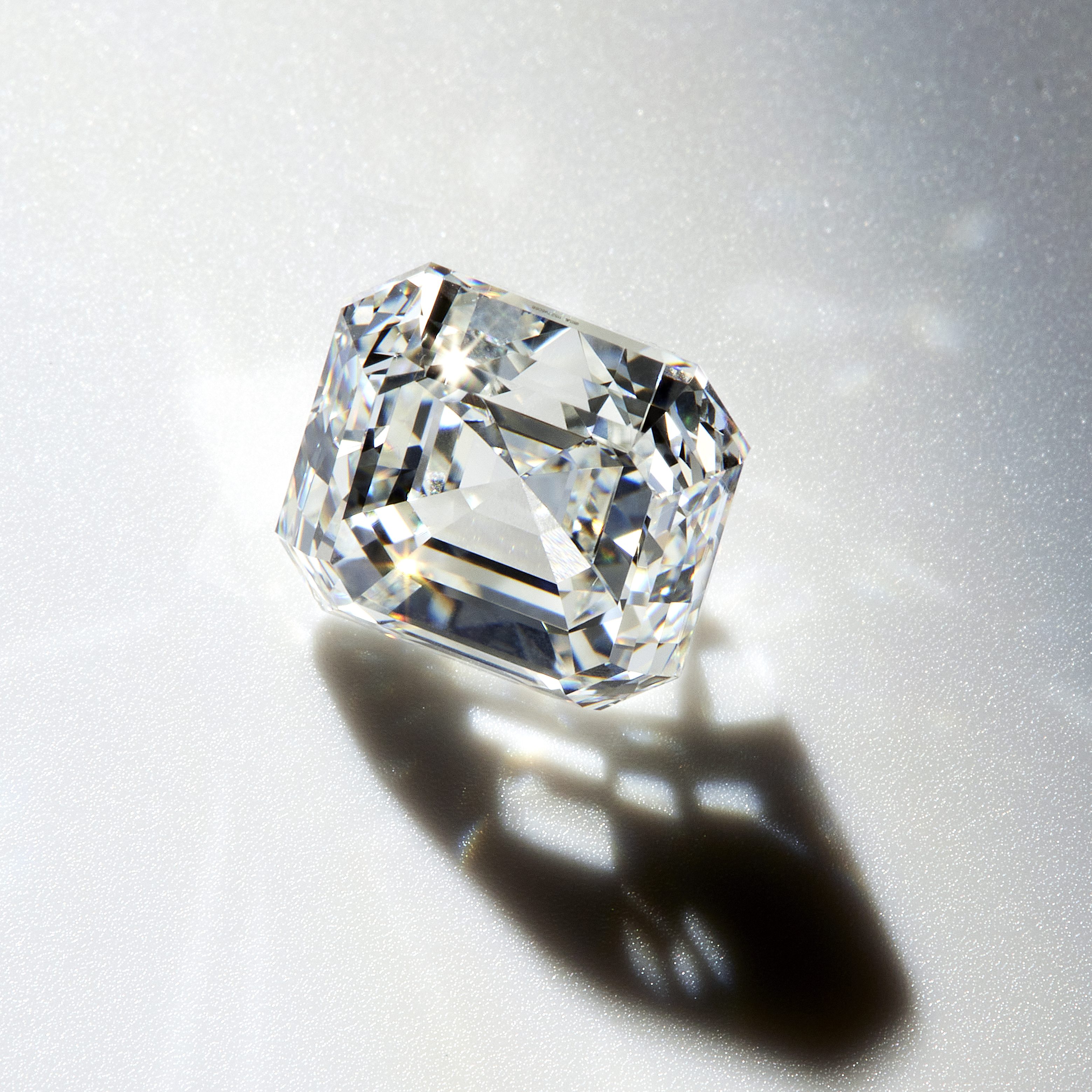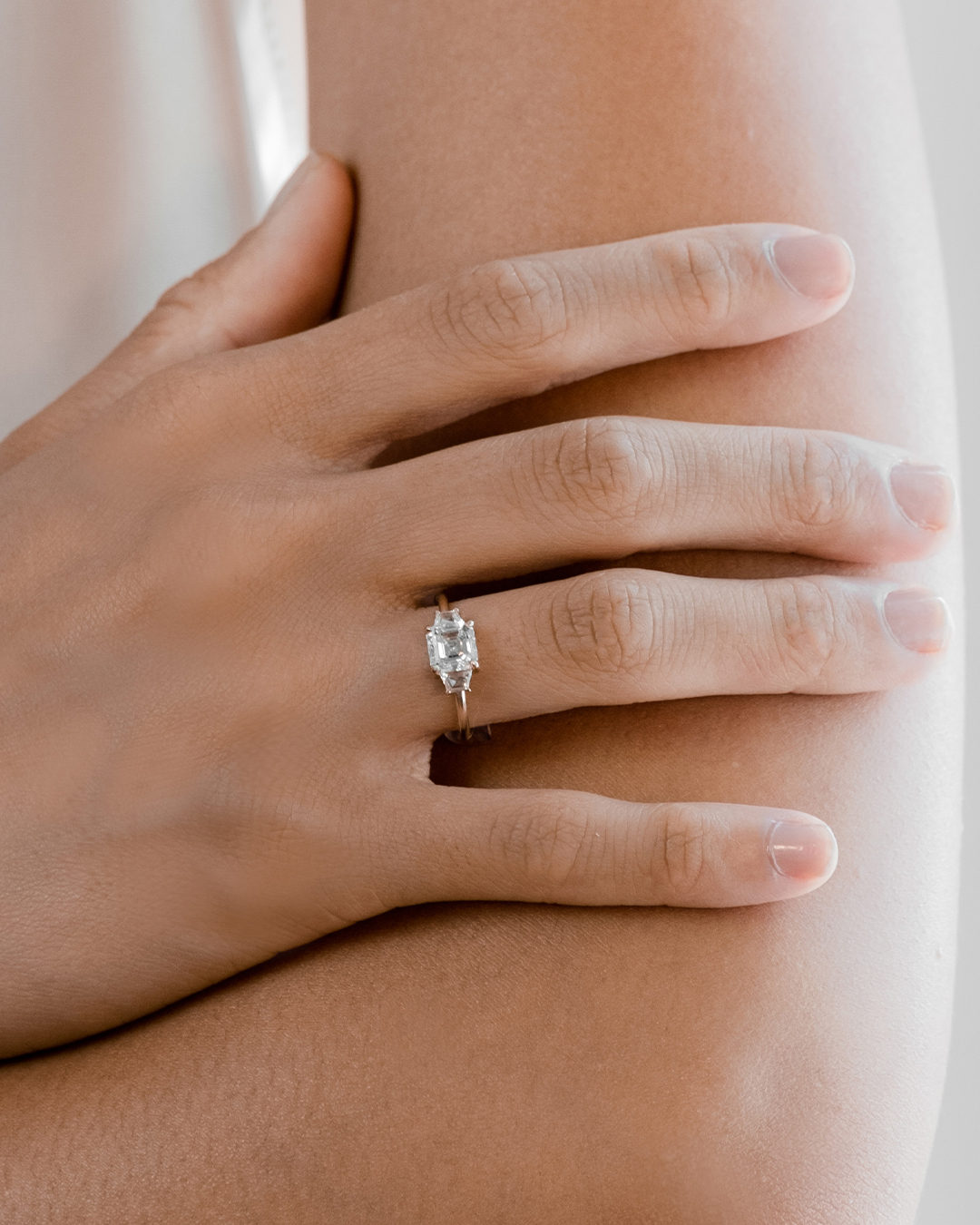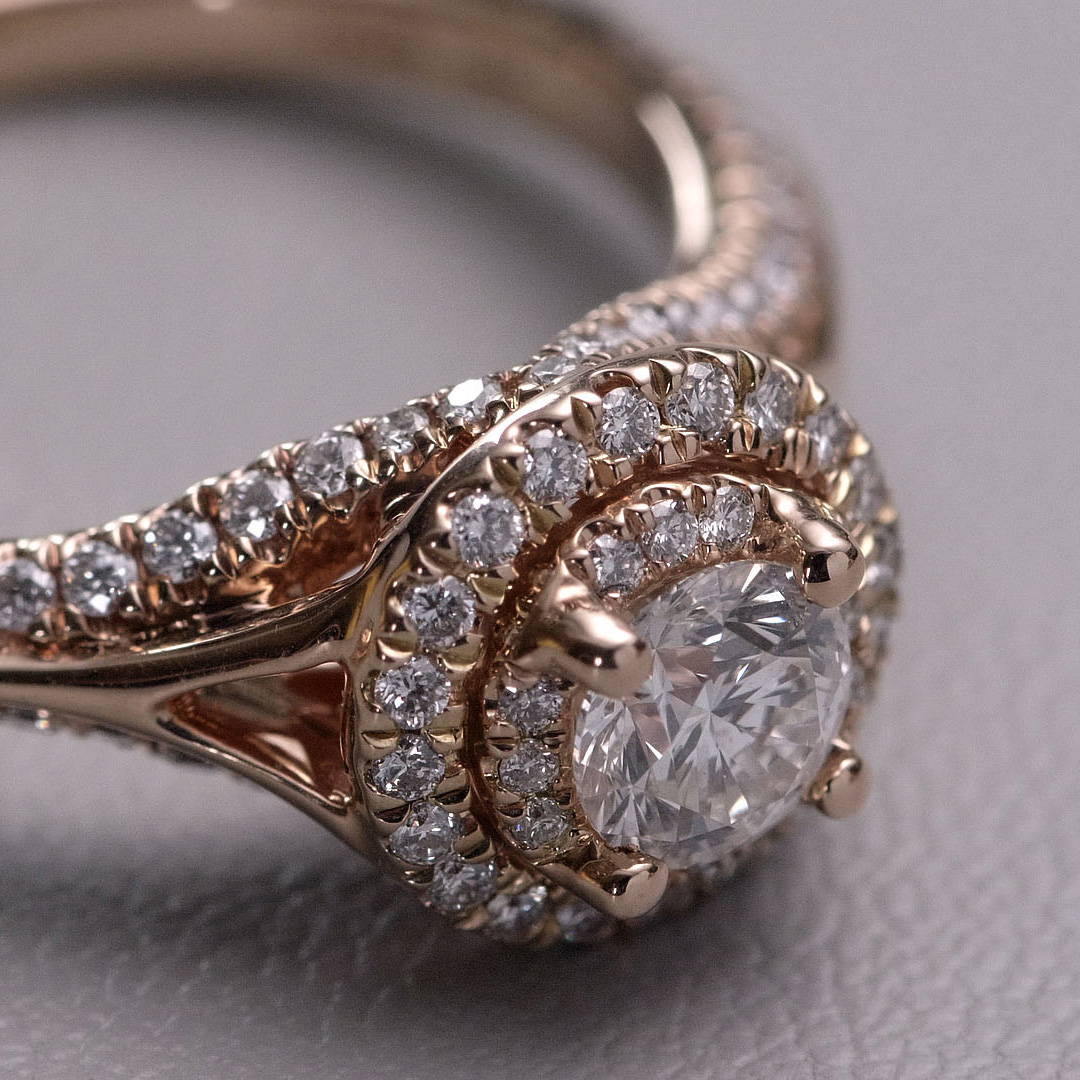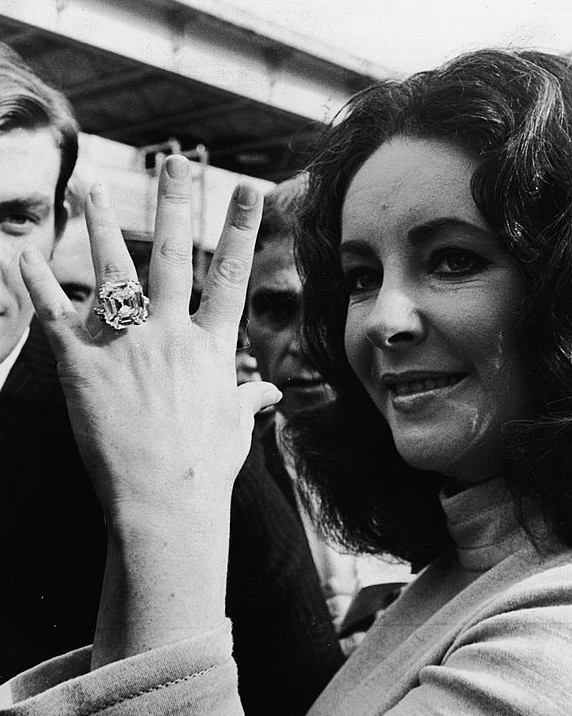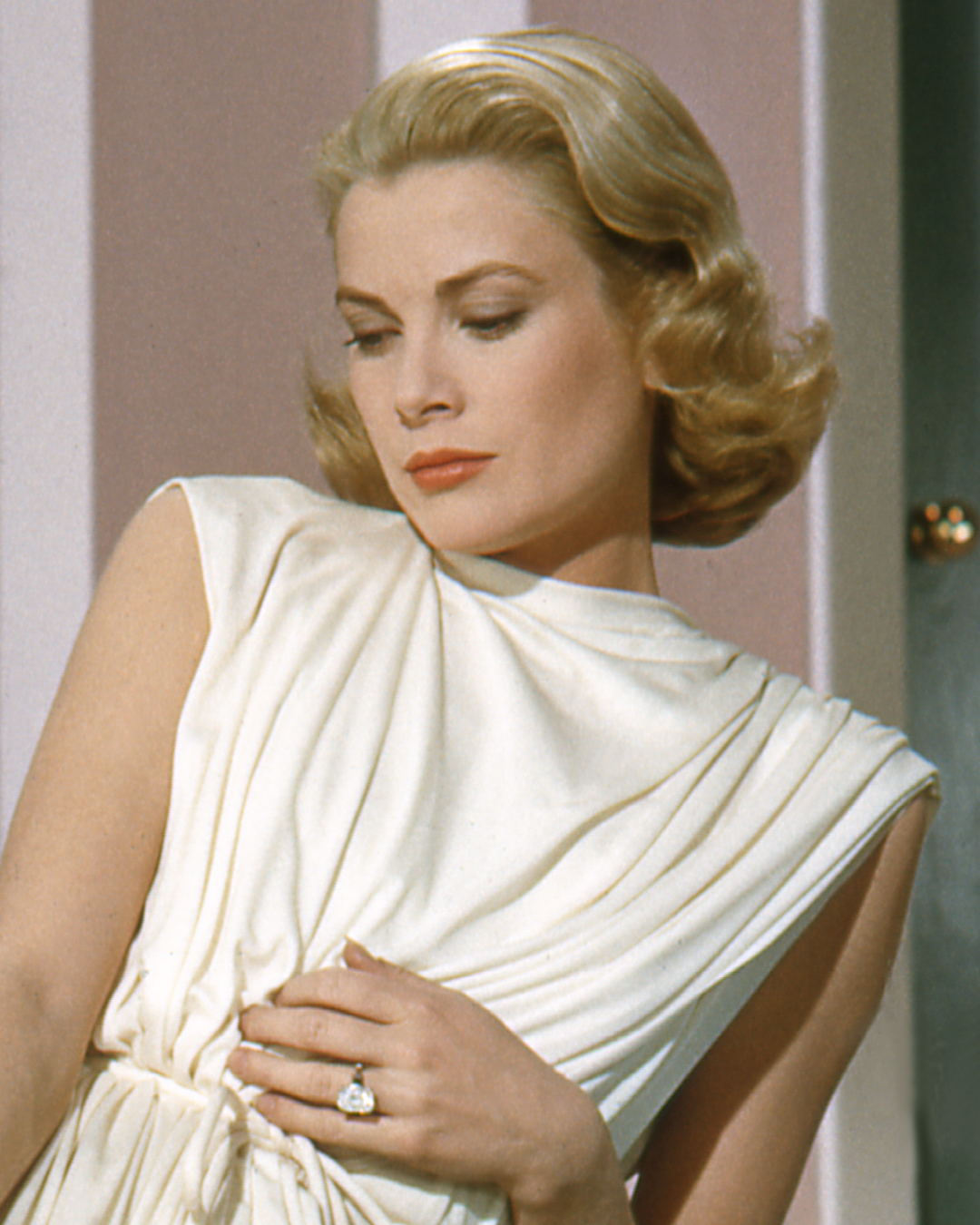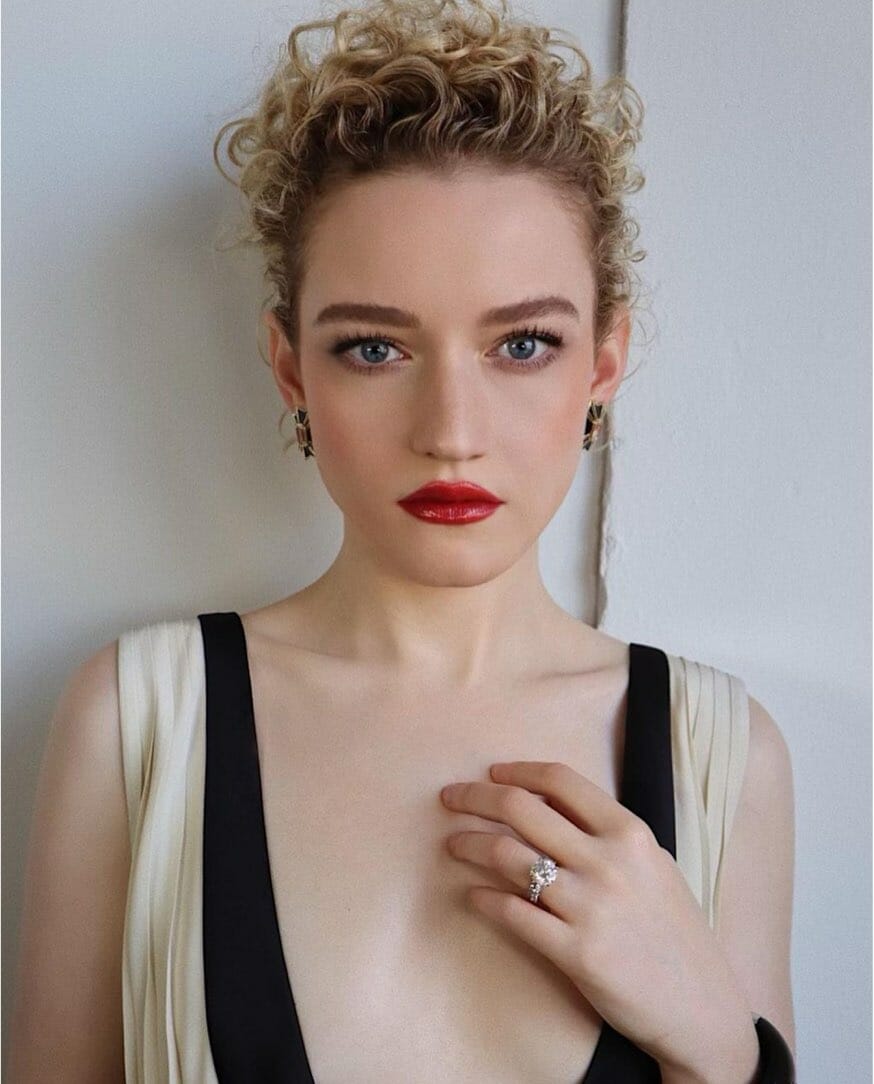If you’re drawn to vintage glamour and Art Deco sophistication, you might want to consider an Asscher cut diamond engagement ring. With its striking step-cut facets and elegant geometric aesthetic, the Asscher cut diamond is a timeless choice that has captivated brides for over a century. Whether set in a classic solitaire or a more intricate vintage-inspired design, this cut is admired for its hall-of-mirrors effect, making it an exquisite choice for those who appreciate both symmetry and sparkle.
What Is an Asscher Cut Diamond Engagement Ring?
An Asscher cut diamond engagement ring features a square diamond with a high crown, deep pavilion, and cropped corners. The original Asscher cut was developed in 1902 by Joseph Asscher of the Asscher Diamond Company, a master diamond cutter born into a prestigious family of gemstone experts. Joseph Asscher’s creation—later known as the Royal Asscher Cut—was designed to maximize clarity and light reflection, creating unparalleled brilliance and symmetry.
The Asscher cut quickly became a favorite among the elite and aristocracy of the early 20th century due to its distinct, sophisticated appearance. Its clean, structured step-cut facets give the diamond a refined elegance, reminiscent of the Art Deco era, and its unique hall-of-mirrors effect makes it instantly recognizable. Over time, the cut was refined for even greater brilliance, solidifying its status as a vintage-meets-modern choice for engagement rings.
While often compared to the emerald cut, the Asscher features larger step facets, a smaller table, and a higher crown, which enhance its brilliance and depth. However, due to its open facets, clarity and color play a significant role in selecting the perfect Asscher cut diamond.
Asscher Cut Diamond vs Other Diamond Shapes
The Asscher cut is often mistaken for other square diamond shapes, such as the square emerald cut and the princess cut, due to its geometric silhouette. Learn the difference between these distinct diamond cuts below.
Asscher Cut Diamond vs Princess Cut Diamond
The Asscher cut and princess cut may both have a square shape, but they differ in brilliance and style—the Asscher cut features step-cut facets that create a sophisticated hall-of-mirrors effect, while the princess cut has brilliant-cut facets designed for maximum sparkle. If you love vintage elegance and Art Deco charm, the Asscher cut is ideal, whereas the princess cut offers a more modern, high-sparkle look with sharp, uncut corners.
Asscher Cut Diamond vs Square Emerald Cut Diamond
While the Asscher cut diamond and square emerald cut diamond are often confused, they are different stone shapes. Both share a step-cut faceting style and square shape, their differences lie in depth, brilliance, and overall aesthetic. The Asscher cut features a higher crown, deeper proportions, and a striking hall-of-mirrors effect, giving it a bold, vintage-inspired vibe. In contrast, the square emerald cut has a shallower profile with a larger table, creating a more understated, modern look with softer light reflection.
Why Asscher Cut Diamond Engagement Rings Are Popular
There’s something undeniably enchanting about an Asscher cut diamond engagement ring. From its rich history to its heirloom quality, here’s why this cut continues to captivate brides:
- Vintage Elegance: The Asscher cut is synonymous with the opulence of the 1920s and 1930s, making it a dream for lovers of Art Deco and antique styles.
- Unique Brilliance: Unlike round brilliant diamonds, which sparkle with fire, Asscher cut diamonds reflect light in broad flashes, creating a sophisticated, understated shimmer.
- Iconic Hollywood Allure: Many celebrities and style icons have chosen the Asscher cut, reinforcing its association with luxury and Old World beauty (more on this below).
- Structured Symmetry: The precise step-cut faceting enhances clarity and creates a structured, geometric appeal that’s perfect for minimalist and vintage settings alike.
What to Look for in an Asscher Cut Diamond Engagement Ring
When selecting an Asscher cut diamond engagement ring, there are a few key factors to keep in mind to ensure you’re getting a high-quality stone.
Clarity Grade Is Crucial
Due to its large, open facets, the Asscher cut reveals inclusions more easily than brilliant-cut diamond shapes, meaning internal flaws will be more visible to the naked eye. To maintain an appearance of flawless diamond clarity, opt for a clarity grade of VS1 or higher, as lower grades may show visible imperfections.
Prioritize Color Grade
Since the Asscher cut doesn’t conceal color as well as other cuts, selecting a diamond in the H color range or higher will ensure a bright, white appearance. Warmer tones (I-J or lower) may be more noticeable in this cut.
Depth and Proportions Matter
The Asscher cut is known for its deep pavilion, which enhances its hall-of-mirrors effect. For the best balance of size and brilliance, look for a depth percentage between 61% and 67%.
Symmetry and Polish
A well-cut Asscher diamond should have perfect symmetry, as any misalignment in the step-cut facets will affect the overall look. Excellent or very good polish and symmetry grades are essential for optimal light reflection.
Consider Carat Weight
Due to its deep pavilion and step-cut facets, an Asscher cut diamond tends to appear smaller per carat compared to brilliant-cut shapes like the round or princess cut. To maximize its presence, many buyers opt for a slightly larger carat weight or a setting that enhances its shape, such as a halo or three-stone design.
Best Settings for Asscher Cut Diamond Engagement Rings
The beauty of an Asscher cut diamond engagement ring is its versatility—it is stunning in both minimalist and intricate settings. Here are some of the best styles to complement this vintage-inspired cut:
Solitaire Setting: A classic solitaire puts all the attention on the Asscher cut’s mesmerizing facets. A simple band in platinum or yellow gold enhances the diamond’s elegance while allowing maximum light play.
Halo Setting: For added sparkle and a more dramatic effect, a halo setting surrounds the Asscher cut diamond with a ring of pavé diamonds. This not only enhances the size of the center stone but also provides a brilliant contrast to its step-cut facets.
Vintage-Inspired Setting: Since the Asscher cut is deeply tied to the Art Deco era, a vintage-inspired setting with intricate milgrain details or filigree designs beautifully complements its aesthetic.
Three-Stone Setting: A three-stone setting featuring side diamonds—such as trapezoid or baguette-cut stones—adds extra brilliance and enhances the structured style of the Asscher cut.
Celebrity Asscher Cut Diamond Engagement Rings
A favorite among Hollywood elite, the Asscher cut diamond engagement ring has graced the fingers of many A-list celebrities, further cementing its status as a luxurious choice.
- Elizabeth Taylor: The legendary actress owned the Krupp Diamond, a 33.19-carat Asscher that remains one of the most iconic diamonds in history.
- Pippa Middleton: The British socialite and sister to the Princess of Wales received a breathtaking Asscher cut engagement ring, featuring an intricate vintage-style setting.
- Nicky Hilton Rothschild: The hotel heiress sports an Asscher cut diamond engagement ring, reinforcing its reputation as a glamorous and regal choice.
With its stunning symmetry, vintage allure, and sophisticated elegance, an Asscher cut diamond engagement ring is a perfect choice for those who appreciate timeless style with a modern twist. Whether you prefer a minimalist solitaire or an ornate Art Deco-inspired setting, this distinctive cut offers unparalleled depth, brilliance, and old-world charm.
When shopping for an Asscher cut diamond, prioritize clarity, color, and symmetry to ensure your ring sparkles with refined brilliance. And with its history of adorning the hands of Hollywood icons and royalty alike, this captivating cut is a true testament to a natural diamond’s enduring legacy and beauty.
